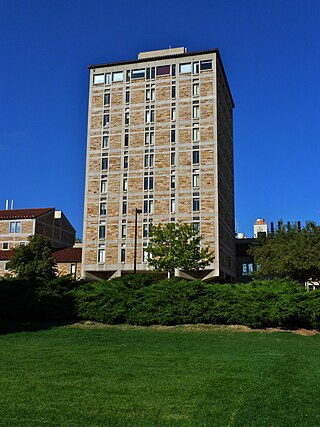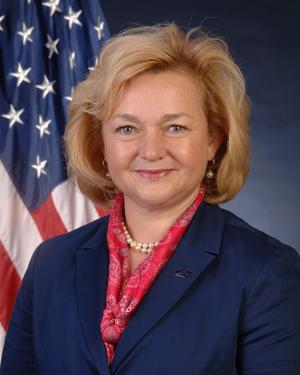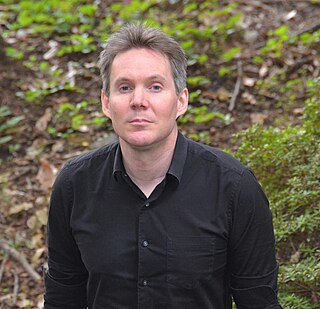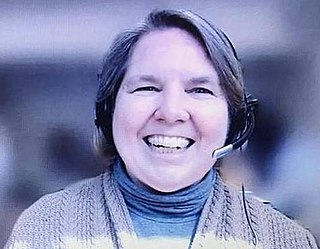The National Institute of Standards and Technology (NIST) is an agency of the United States Department of Commerce whose mission is to promote American innovation and industrial competitiveness. NIST's activities are organized into physical science laboratory programs that include nanoscale science and technology, engineering, information technology, neutron research, material measurement, and physical measurement. From 1901 to 1988, the agency was named the National Bureau of Standards.

Particle physics or high-energy physics is the study of fundamental particles and forces that constitute matter and radiation. The field also studies combinations of elementary particles up to the scale of protons and neutrons, while the study of combination of protons and neutrons is called nuclear physics.

William Daniel Phillips is an American physicist. He shared the Nobel Prize in Physics, in 1997, with Steven Chu and Claude Cohen-Tannoudji.

JILA, formerly known as the Joint Institute for Laboratory Astrophysics, is a physical science research institute in the United States. JILA is located on the University of Colorado Boulder campus. JILA was founded in 1962 as a joint institute of The University of Colorado Boulder and the National Institute of Standards & Technology.

John Lewis "Jan" Hall is an American physicist, and Nobel laureate in physics. He shared the 2005 Nobel Prize in Physics with Theodor W. Hänsch and Roy Glauber for his work in precision spectroscopy.
James Edward Zimmerman was born in Lantry, South Dakota. He was a coinventor of the radio-frequency superconducting quantum interference device (SQUID) and he is credited with coining the term.
Charles Tahan is a U.S. physicist specializing in condensed matter physics and quantum information science and technology. He currently serves as the Assistant Director for Quantum Information Science (QIS) and the Director of the National Quantum Coordination Office (NQCO) within the White House Office of Science and Technology Policy. Tahan is also Chief Scientist of the National Security Agency's Laboratory for Physical Sciences.

David Jeffrey Wineland is an American Nobel-laureate physicist at the National Institute of Standards and Technology (NIST) physics laboratory. His work has included advances in optics, specifically laser-cooling trapped ions and using ions for quantum-computing operations. He was awarded the 2012 Nobel Prize in Physics, jointly with Serge Haroche, for "ground-breaking experimental methods that enable measuring and manipulation of individual quantum systems".

Ana Maria Rey is a Colombian theoretical physicist, professor at University of Colorado at Boulder, a JILA fellow, a fellow at National Institute of Standards and Technology and a fellow of the American Physical Society. Rey was the first Hispanic woman to win the Blavatnik Awards for Young Scientists in 2019. In 2023, she was elected to the National Academy of Sciences. She is currently the chair of DAMOP, the American Physical Society's division in Atomic, Molecular and Optical Physics (AMO).
Evans Hayward was an American physicist and a Fellow of the American Physical Society. She was an international leader in photonuclear physics using beams of electrons, positrons and neutrons from high-energy accelerators to probe nuclear structure.

Jun Ye is a Chinese-American physicist at JILA, National Institute of Standards and Technology, and the University of Colorado Boulder, working primarily in the field of atomic, molecular and optical physics.

Katharine Blodgett Gebbie was an American astrophysicist and civil servant. She was the founding Director of the Physical Measurement Laboratory of the National Institute of Standards and Technology (NIST), and of its two immediate predecessors, the Physics Laboratory and the Center for Atomic, Molecular and Optical Physics, both for which she was the only Director. During her 22 years of management of these institutions, four of its scientists were awarded the Nobel Prize in Physics. In 2015, the NIST Katharine Blodgett Gebbie Laboratory Building in Boulder, Colorado was named in her honor.
Hui Wu is a Chinese materials chemist and engineer. She is a senior scientist at the National Institute of Standards and Technology Center for Neutron Research. Wu researches the synthesis, structure, solid state chemistry, and properties of complex oxides and hydrides. She received the Department of Commerce Bronze Medal for producing an entirely new route to synthesizing hydrogen-storage materials for fuel cells based on the complex chemistry of amines and boranes.
Heather Jean Patrick is an American physicist. She is a researcher and project lead at National Institute of Standards and Technology. Patrick's research focuses on applications of scattering and reflectance measurements, advanced light sources, and robotics to the characterization and metrology of optical materials.

Angela Renee Hight Walker is an American physicist. She is a project leader in the nanoscale spectroscopy group at the National Institute of Standards and Technology. Hight Walker's research includes advancing optical spectroscopic techniques and specifically their applicability to characterize quantum nanomaterials.
Katarina (Kat) Cicak is a physicist. She is a researcher in the advanced microwave photonics group at the National Institute of Standards and Technology.

Samuel L. Manzello is a technical advisor at Reax Engineering. He has worked on microgravity droplet combustion, droplet-surface interaction, soot formation in well-stirred reactor/plug flow reactor, fire-structure interaction, and structure vulnerabilities in wildland-urban interface (WUI) fires.

Theodore E. Madey was an American condensed matter physicist who specialized in the chemistry and physics of surfaces. He was a professor in the physics and chemistry departments at Rutgers University at the time of his death.

Gretchen K. Campbell is an American atomic, molecular, and optical physicist associated with the National Institute of Standards and Technology. She works in the field of atomtronics and has received awards in recognition of her research contributions on Bose-Einstein condensates.

Marla Lorraine Dowell is an American physicist who is Director of the CHIPS R&D Metrology Program and NIST Boulder Laboratory.












